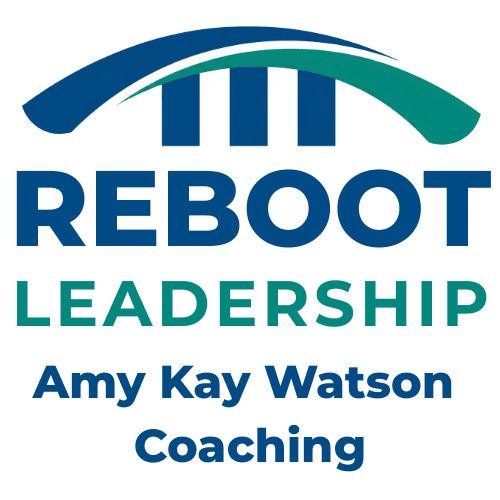
Table of Contents
- Why This Report Matters
- The Hidden Cost of Withholding Empathy
- What the Turnaround Looks Like
- Practical Ways to Lead with Empathy and Accountability Now
- The Empathy Payoff: A Leadership Framework
- Final Reflection
One of my first coaching clients was a minister who felt trapped and under fire. Her staff resisted her leadership. Her congregation doubted her. She was ready to quit. Even members of her church warned me not to take her on. But we worked together, and she stayed. And over time, she transformed—not just her outlook, but her leadership, her staff, and her community. What made the difference? Empathy—applied with structure and accountability.
According to the 2025 State of Workplace Empathy Report by Businessolver, the cost of unempathetic leadership is staggering: $180 billion in avoidable turnover each year. The good news is that when empathy is consistently practiced—not just given lip service—it becomes a strategic advantage.
In this article, I’ll unpack what this report reveals about how empathy and accountability work together to retain talent, reduce toxicity, and restore trust—and how you can begin applying it right away.
Why This Report Matters
The Businessolver report is not just a call for kindness—it’s a come-to-Jesus moment for leaders chasing results at the cost of relationships. The data shows that employees at unempathetic organizations are 1.5x more likely to quit, contributing to an estimated $180 billion in annual attrition costs. But even more sobering is the ripple effect: these workplaces also report 3x higher toxicity and 1.3x more mental health issues.
Despite this, 59% of CEOs now view empathy as a “nice-to-have” rather than a necessity, even as DEIB efforts are declining. The perception gap is real. Many leaders feel they’re being empathetic—but only 62% of employees agree their CEO is. In contrast, managers—those closest to the daily friction—are seen as empathetic by a much wider margin.
The report reinforces a pattern I’ve seen over and over in coaching: leaders who dismiss empathy as too “soft” often face disconnection, dysfunction, and avoidable turnover in their teams. Those who operationalize it through consistent practice and self-awareness unlock not just loyalty, but a reinvigorated team.
The Hidden Cost of Withholding Empathy
When empathy disappears from leadership, it’s rarely intentional. More often, it’s a casualty of burnout, fear, or performance pressure. One HR respondent in the study confessed, “Some employees will take your empathy for weakness and use it to get away with things.” That fear is real. But what it misses is the difference between empathy and enabling.
As the data shows, empathy doesn’t mean becoming a doormat. In fact, employees at empathetic organizations are 4x more likely to see their CEO as empathetic and 2x more likely to see HR as empathetic—and those perceptions fuel trust, retention, and performancebusinessolver-2025-stat….
The flip side is grim: employees who feel their workplace lacks empathy are far more likely to experience burnout, work through mental health issues alone, and disengage from leadership entirely.
What the Turnaround Looks Like
That minister I coached started in a state of overwhelm, believing that being “compassionate” wasn’t getting results—and that the only alternative was to become hard-nosed. But as we worked together, she discovered that empathy didn’t mean softness. It meant grounding. It meant understanding without absorbing. And most of all, it meant leading from a peaceful core rather than reactive pressure.
Here’s what she said nine months in:
“The more I learned about self-differentiation and overfunctioning—and the more I practiced self-compassion—the more I became able to catch my triggers before they would fire. Now things are calm and working well… I love my work again.”
A year later, she added:
“Amy helped me learn how to deal more honestly with people without fear of losing status… As a result, we have created an effective leadership team and a powerful volunteer core. Several people stepped up in bigger ways… It feels like a fresh canvas—freeing, creative, and innovative.”
Her story mirrors what Businessolver’s report emphasizes: when leaders become emotionally self-aware and use empathy to foster accountability, everyone levels up.
Practical Ways to Lead with Empathy and Accountability Now
Clarify expectations—and express care.
Empathy without accountability (clarity) is collusion. Accountability without empathy is coercion. Combine them to avoid the pitfalls of their solo extremes.
- Try: “I care about your success, and I also need to make sure the team can count on this being done.”
Watch for overfunctioning.
Stepping in too much—because you care—can disempower others.
- Ask yourself: “Am I solving this to soothe myself or to help them grow?”
Use self-empathy as a leadership foundation.
Leaders who are harsh with themselves often project it onto others.
- Practice: When you mess up, replace “What’s wrong with me?” with “What was I trying to protect?”
Challenge false urgency.
Many leaders skip empathy because they feel they “don’t have time.”
- Try: Block 10 minutes post-meeting to reflect on tone, tensions, and team signals. Make a note for your next 1:1.
Use empathy to increase—not avoid—accountability.
Gently holding people accountable with understanding builds trust. It isn’t about giving in and accepting excuses. It’s about starting the conversation so you can help to remove barriers and equip them for success.
- Try: “I noticed this wasn’t completed on time. Can we talk about what got in the way?”
Treat flexibility as a form of respect.
The report shows 87% of respondents see remote/flex work as a marker of empathy.
- Ask: “What’s the best way for you to get this done well—and stay well while doing it?”
Listen for the emotion beneath resistance.
When people push back, there’s usually fear, not laziness.
- Practice: “What’s feeling risky about this for you?”
The Empathy Payoff: A Leadership Framework
If you want to retain your best people, avoid $180B in attrition costs, and build a resilient culture, here’s the leadership loop to follow:
- Believe empathy matters—even when it’s hard.
- Practice empathy first with yourself—so you can stay grounded.
- Use empathy to inform—but not avoid—clear expectations.
- Hold accountability as an act of care—not control.
- Create flexible, trustworthy structures that empower growth.
This is not soft leadership. It’s strategic presence. And it works.
Final Reflection
The Businessolver report makes one thing clear: empathy is no longer a side dish—it’s the main course. Leaders who fail to operationalize it risk burnout, backlash, and billion-dollar losses. But those who make empathy a daily practice—especially in performance conversations—create teams that stay, grow, and thrive.
If you’re ready to embed this approach into your leadership or your organization, I’d love to support your journey.
👉 Book a consult
FAQ Block (Plain Text)
Is empathy really measurable in business terms?
Yes. The Businessolver report estimates $180 billion in annual retention savings for empathetic companies.
Can empathy coexist with accountability?
Absolutely. In fact, empathy makes accountability sustainable because it builds trust and clarity.
What if I don’t feel naturally empathetic?
Empathy is a skill, not a trait. It can be learned and practiced—starting with curiosity and self-awareness.
How can I encourage empathy in a fast-paced environment?
Pause, name what you notice, and ask open questions. Even 2 minutes of presence can shift outcomes.
Is remote work tied to empathy?
Yes—87% of employees say flexible work demonstrates empathy. It signals trust, respect, and wellbeing.

